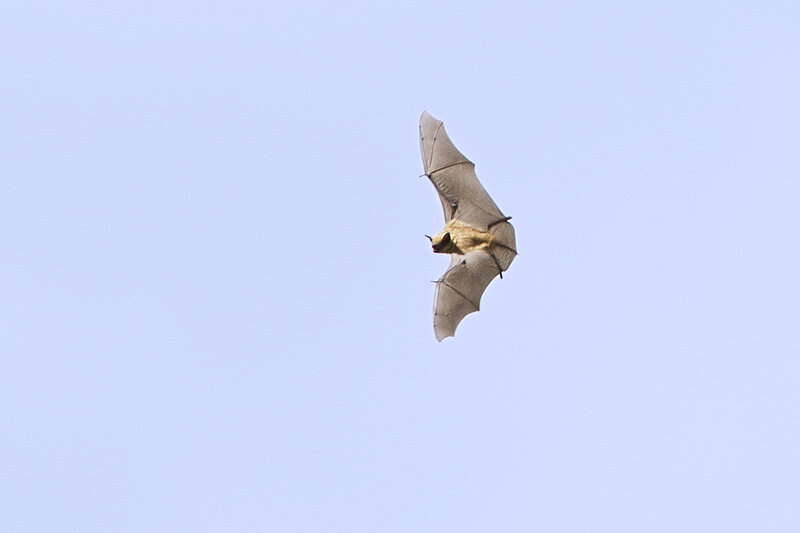Winter cold brings significant changes to the Alberta landscape and causes animals to take action in order to survive. Chickadee’s have warm down feathers for their active winter lifestyle and wood frogs have developed the ability to safely freeze and then thaw in the spring. But other organisms have recognized the safety in numbers and use group hibernation as a tool to successfully overwinter here.
Ladybugs (also called Lady Birds or Lady Beetles)
Have you ever wondered where our lovely garden friends go in winter? Unlike many other species, ladybugs don’t migrate or move to warmer locations when the cool fall air approaches. Being an ectotherm, or “cold-blooded” organism which draws warmth from their environment, means that the winter cold will render these species inactive. So nearly all 450 native North American species hibernate. As smaller insects, such as aphids, are no longer available for a food source, ladybugs are forced to rely on their fat reserves until the spring time when they can resume their aphid hunts.
Photo by Betty Fisher
When searching for hibernation locations, ladybugs will search for prime locations that are free from predators, are shielded from the wind, and unlikely to be disturbed. In their native habitat, this could be under tree bark or in nooks of trees. But in the human developed landscape, there becomes other options. Cracks in buildings such as sheds and garages or in leaf litter under a deck can also fit the bill. These prime locations are in high demand, so naturally ladybugs are bound to bump into each other here. But they go beyond this, knowing that many ladybugs will provide better protection against the elements. In order to attract more towards these prime locations, they will emit an attractant pheromone similar that used to deter predators and attract mates. This results in ladybugs hibernating in the hundreds and even thousands. These groups of ladybugs can also be referred to as a “Loveliness of Ladybugs”.
Garter Snakes
Lack of food and warm weather affects many other species in Alberta. The garter snake is another example of an animal facing these issues. As they are also incapable of long migrations, they are forced to find other survival techniques. A hibernacula does just the trick for these species of snakes. This is an underground cavity where garter snakes will be protected from the cold and frost line. A hibernacula could take the form of a rocky outcrop, an old well, or any other sort of underground hollow. In Alberta, these areas are relatively rare, especially since they prefer them to be near water source such as stream. This means that hundreds of garter snakes in an area are likely to congregate in one place. As they huddle together during their hibernation, they help each other to conserve heat. Having large numbers of males and females together also conveniently allows for mating in the spring time, which happens near these hibernaculum’s.
Photo by Greg Schechter
An individual garter snake is likely to return to the same site year after year. Since these species prefer to be near water, you’ll likely find such occurrences in river valleys or near wetlands. These areas are crucial to the survival of these species, so it is important to not destroy or disturb a hibernacula site, even if it is not currently being used. These sites are so important, mainly due to the high density of vulnerable snakes, that they are protected by the Alberta Wildlife Act. Therefore, conserving river valley habitat can greatly benefit these unique species. You can check out this type of habitat at sites such as Pipestone Creek and Larch Sanctuary. If you encounter a large number of garter snakes in the spring or fall, you’ll know there must be a hibernacula nearby.
Bats
Photo by Ann Froschauer, USFWS
The lack of insect food in winter also affects 9 of our native bat species in Alberta. At least 6 of these species will also hibernate, including the most commonly seen Little Brown Bat. On nights during August to October bats will gather near caves and old mines to mate and will likely stay nearby to hibernate afterwards. Alberta bats are considered to be true or deep hibernators. This means that their body temperature decreases to nearly 0°C, and their heart rate and metabolism also drastically drops. During this time, they will rely completely on fat reserves built up from insects collected during warmer months.
Similar to garter snakes, bats winter roosting sites are also called hibernaculum’s, where one to many bats may congregate. Where these are found is mostly unknown but a few caves have been pinpointed in Alberta. These areas are perfect hibernating sites due to their cool, dark atmosphere, and allow enough room for many bats to gather together for warmth. These conditions can also be found in deep rock crevices, which can be found in some Alberta river valleys. For species like the Big Brown Bat, buildings may also work for a winter roosting site. With the spring weather in April to May, comes the emergence of our bat species.
Photo by Gerald Romanchuk
Sources:
Alberta’s Happy Hibernators: Bats. (2015, October 29). Retrieved from Alberta Environment and Parks: https://albertaep.wordpress.com/2015/10/29/albertas-happy-hibernators-bats/
Common Garter Snake. (2019). Retrieved from Canadian Wildlife Federation: http://cwf-fcf.org/en/resources/encyclopedias/fauna/amphibians-and-reptiles/common-garter-snake.html
Jones, S. (2019). Ladybug 101. Retrieved from Canadian Wildlife Federation: http://cwf-fcf.org/en/resources/encyclopedias/fauna/insects/ladybug-101.html
Langlois, A. (2013). Little Brown Bat. Retrieved from Hinterland Who's Who: http://www.hww.ca/en/wildlife/mammals/little-brown-bat.html
Snakes in Alberta. (2016, March). Retrieved from Government of Alberta: https://open.alberta.ca/dataset/c01cba73-2e78-4b01-accc-c5b80cd47ab5/resource/eea53c16-12b4-4ca3-8779-e16adefe1ad6/download/sarbrochure-snakesinalberta-mar2016.pdf
The Bats of Alberta. (2019). Retrieved from Alberta Community Bat Program: https://www.albertabats.ca/batprofiles/
Western Garter Snake. (2019). Retrieved from Hinterland Who's Who: http://www.hww.ca/en/wildlife/fish-amphibians-and-reptiles/western-garter-snake.html
What Ladybugs Do in Winter – Hibernation, Where They Go and Why . (2018). Retrieved from Ladybug Planet: https://ladybugplanet.com/what-ladybugs-do-in-winter-where-they-go-and-why/




